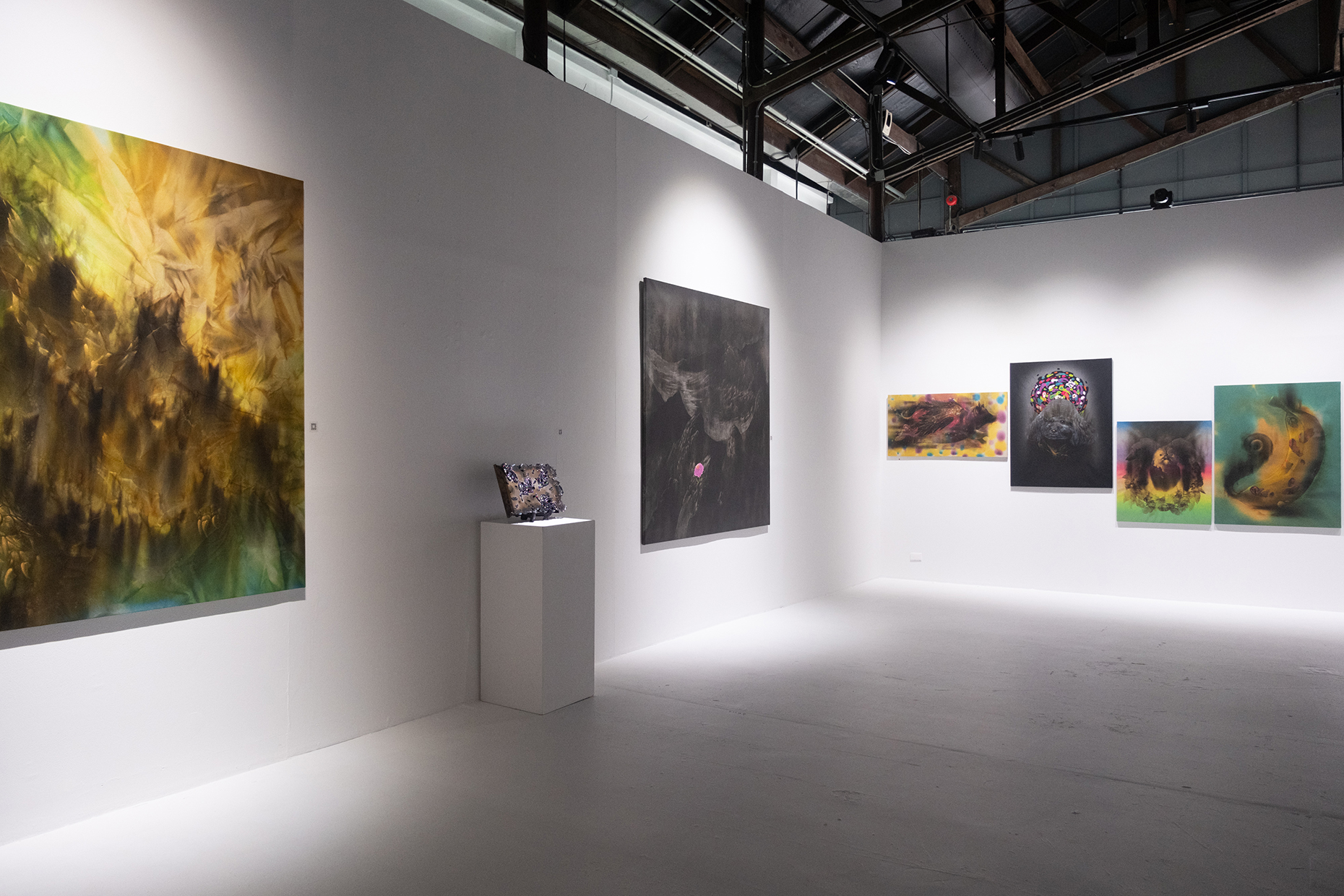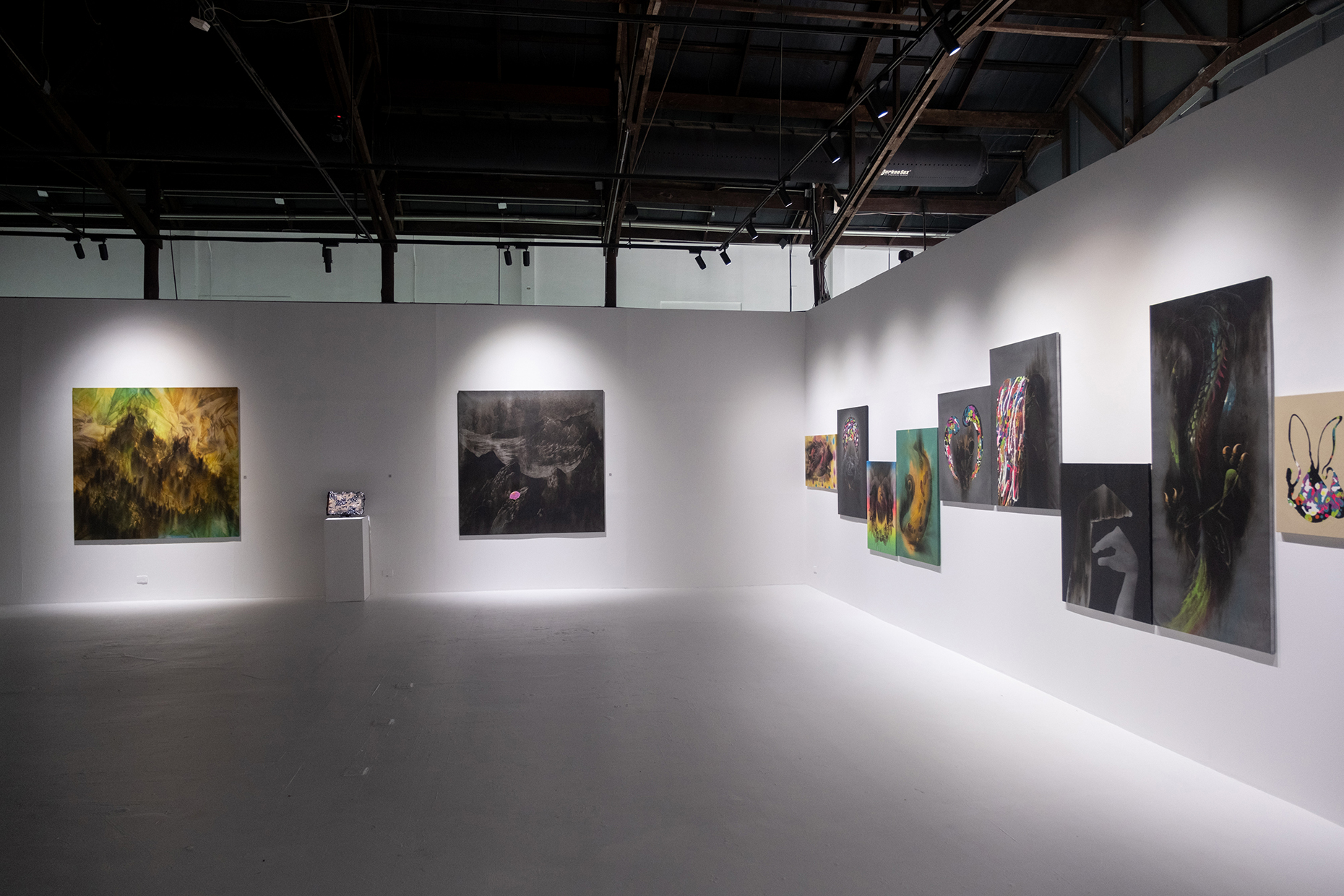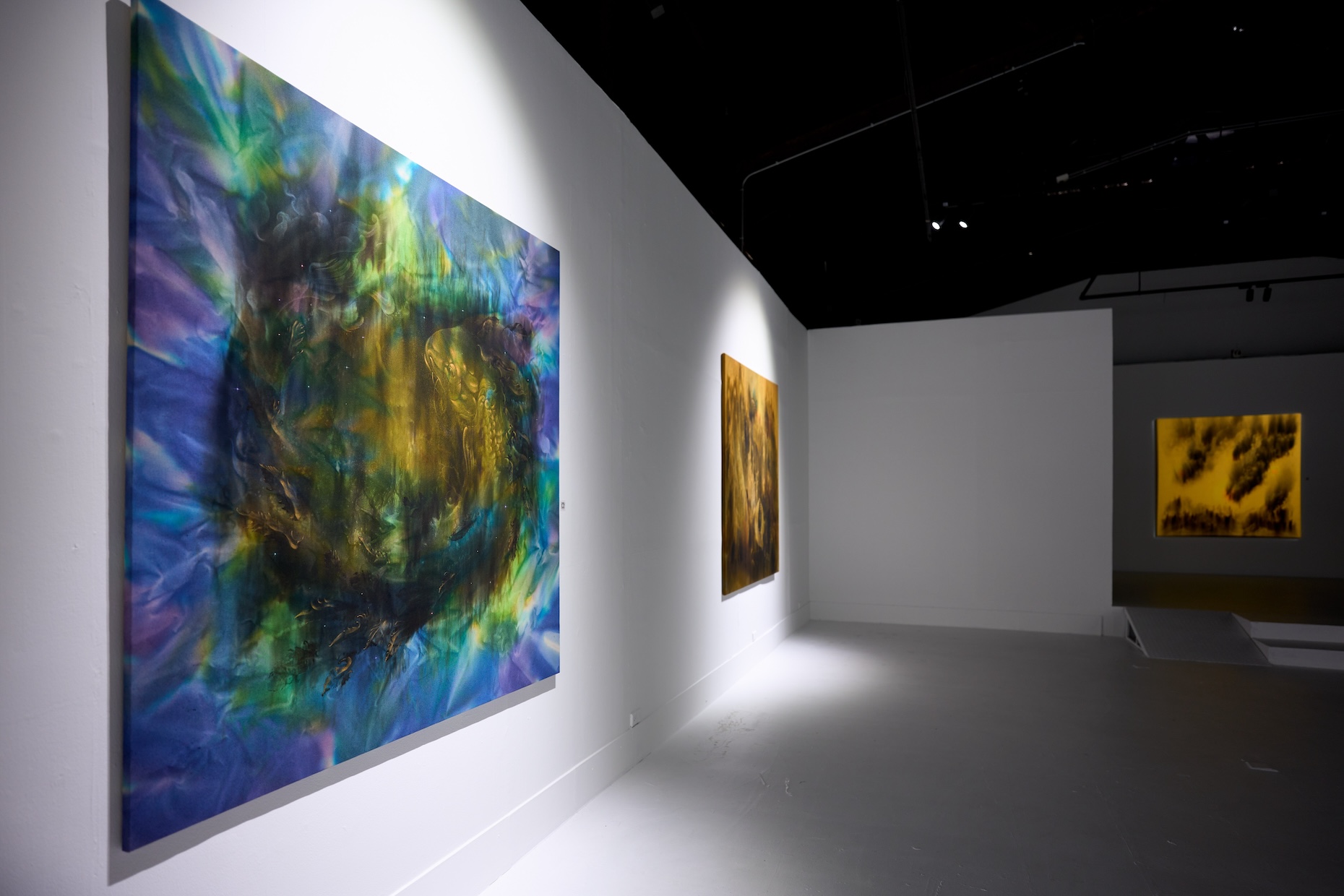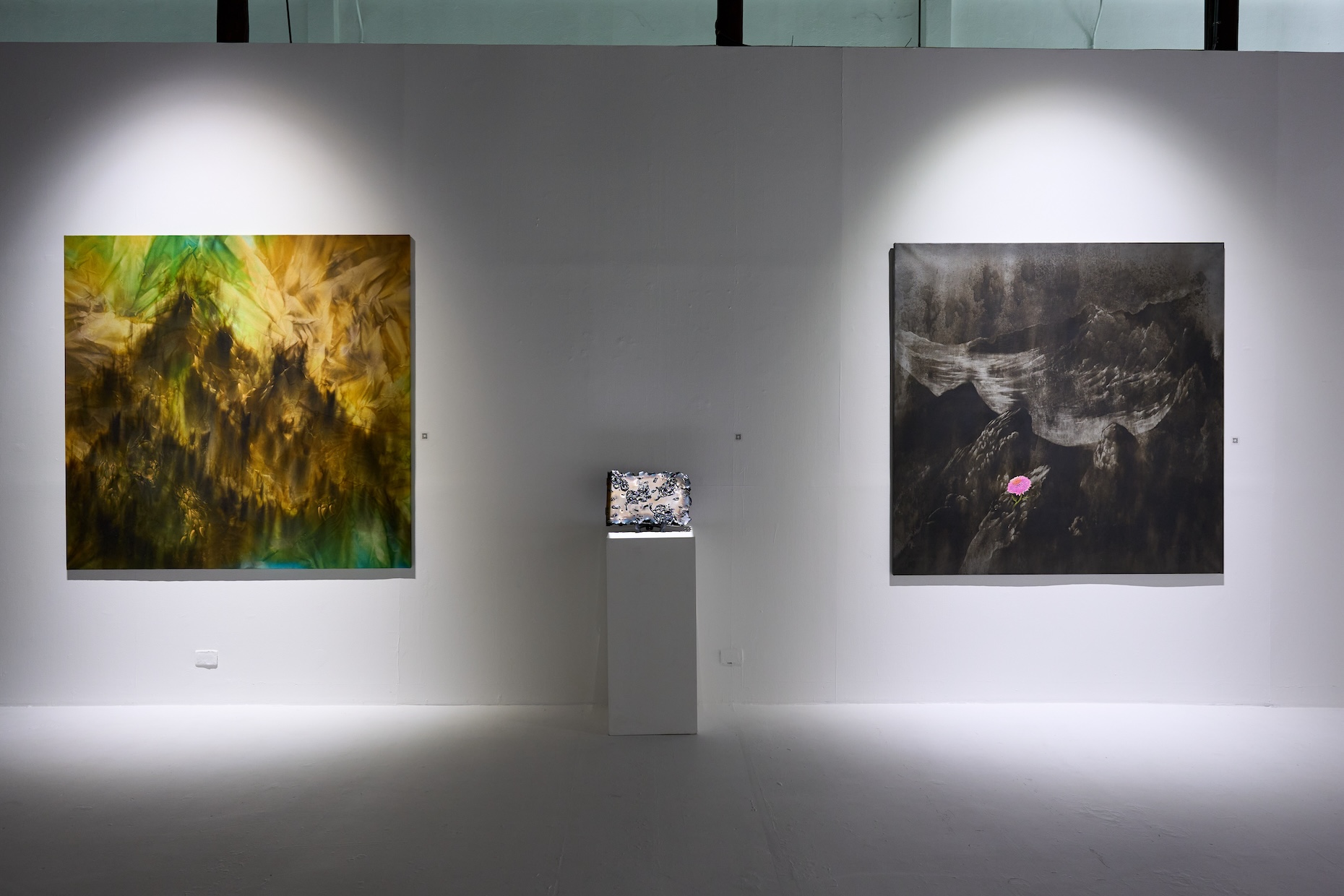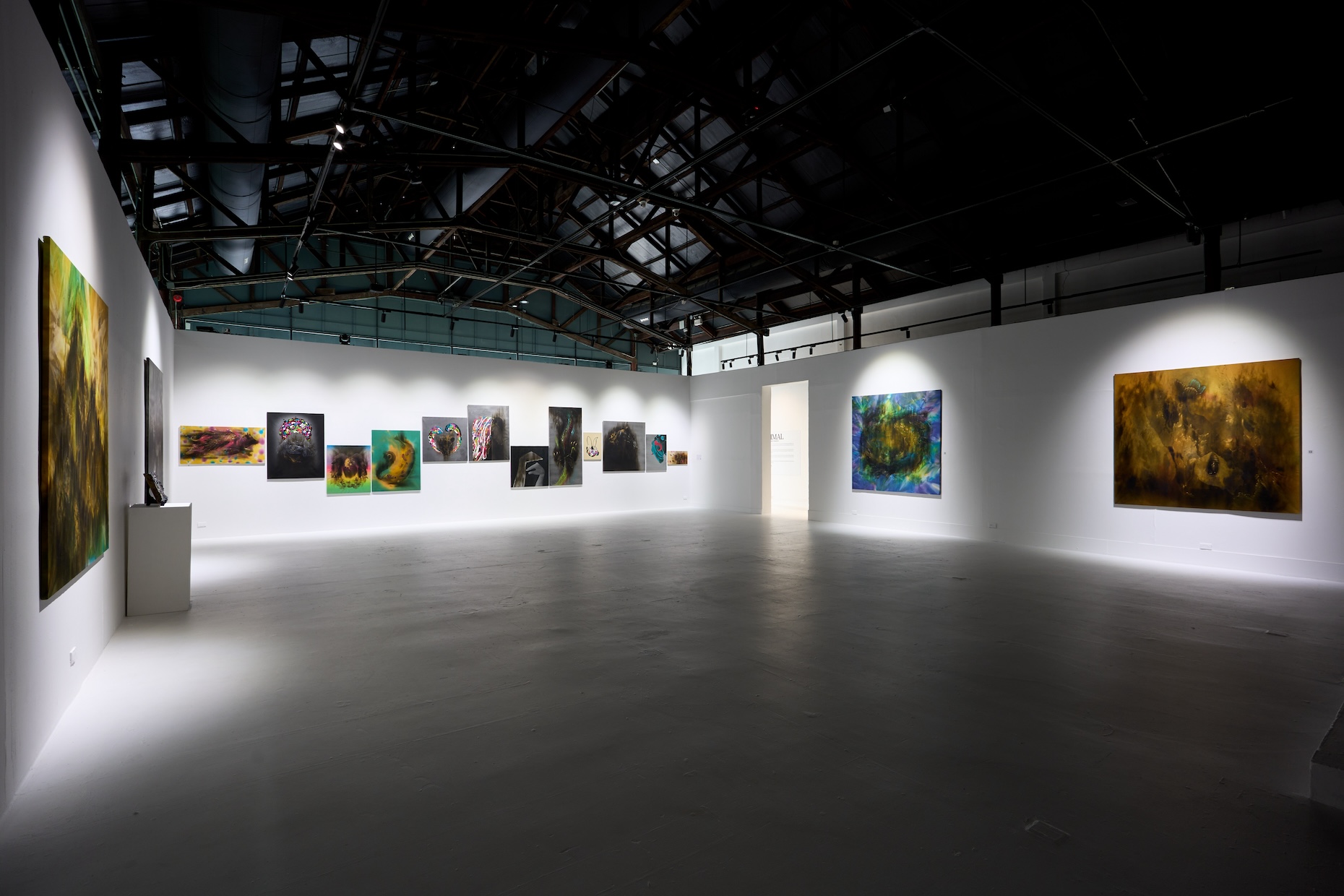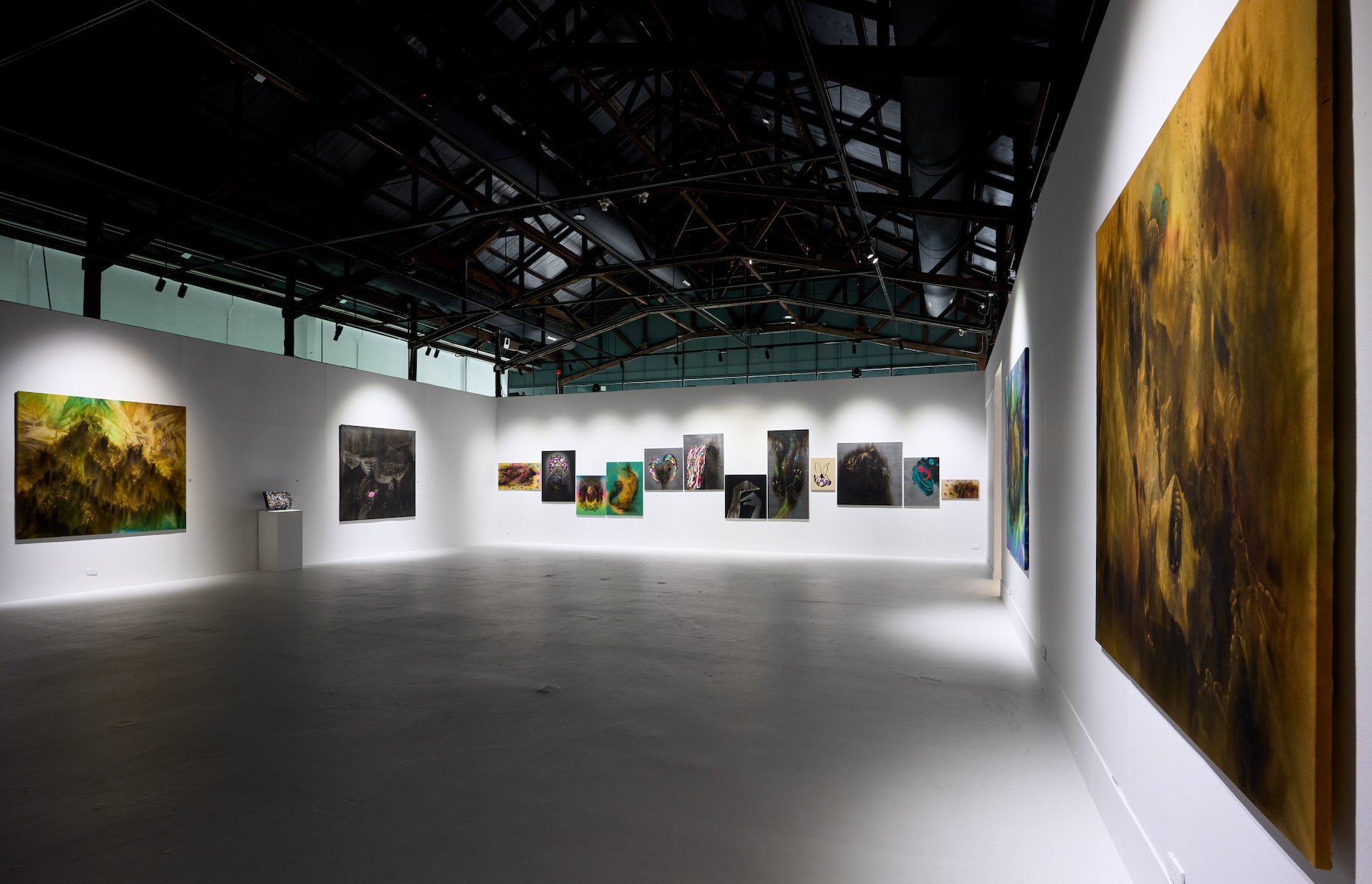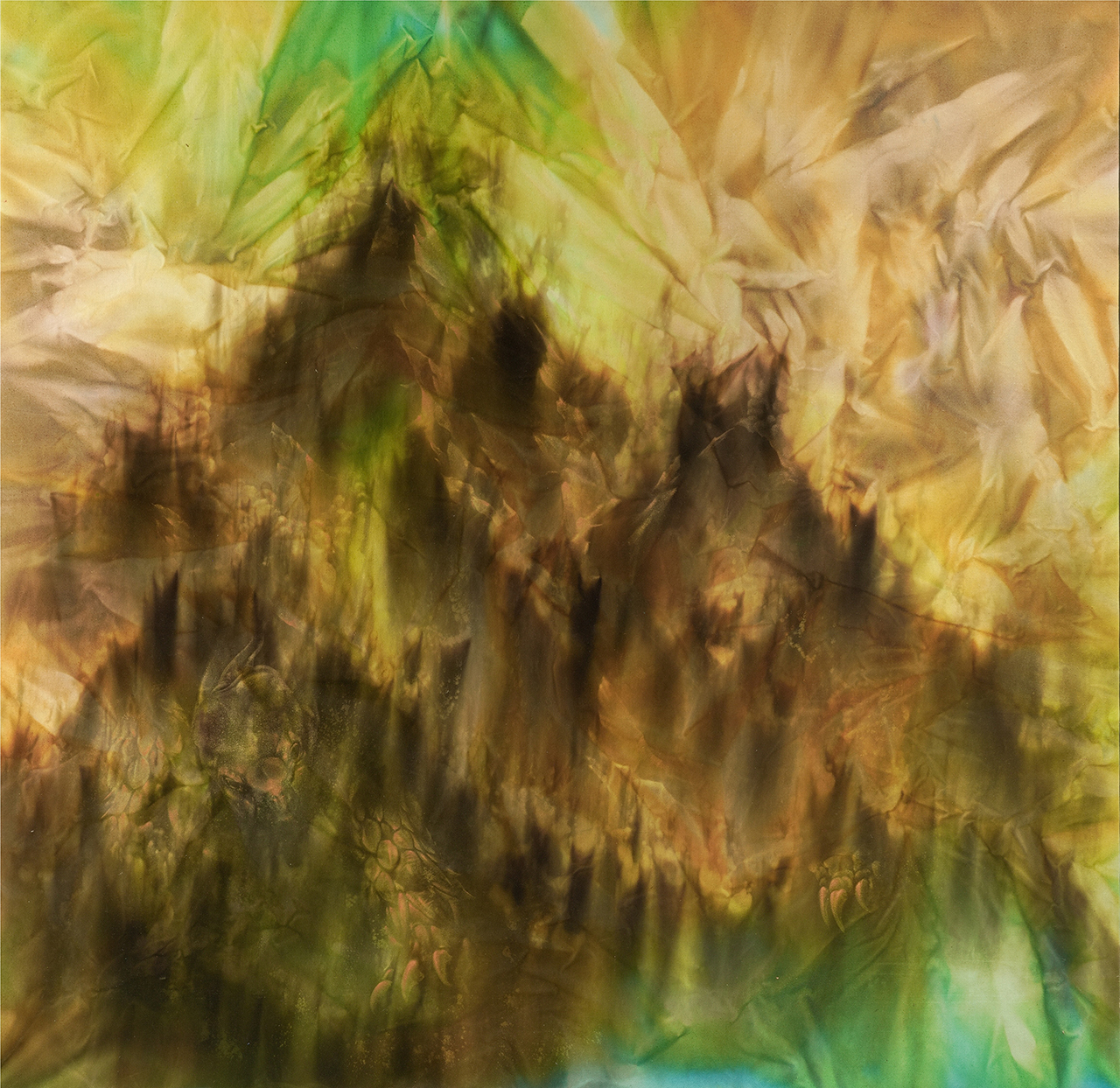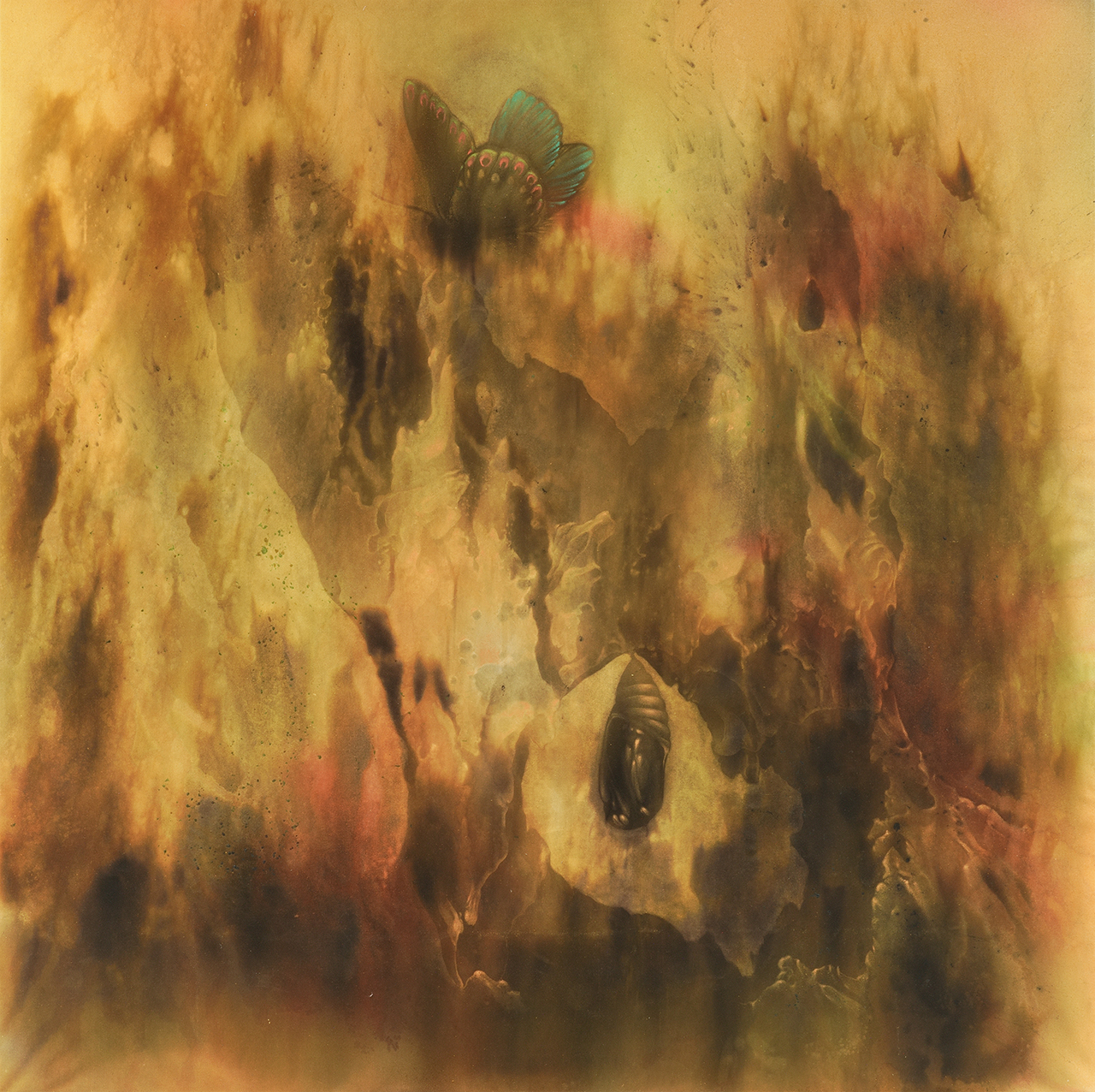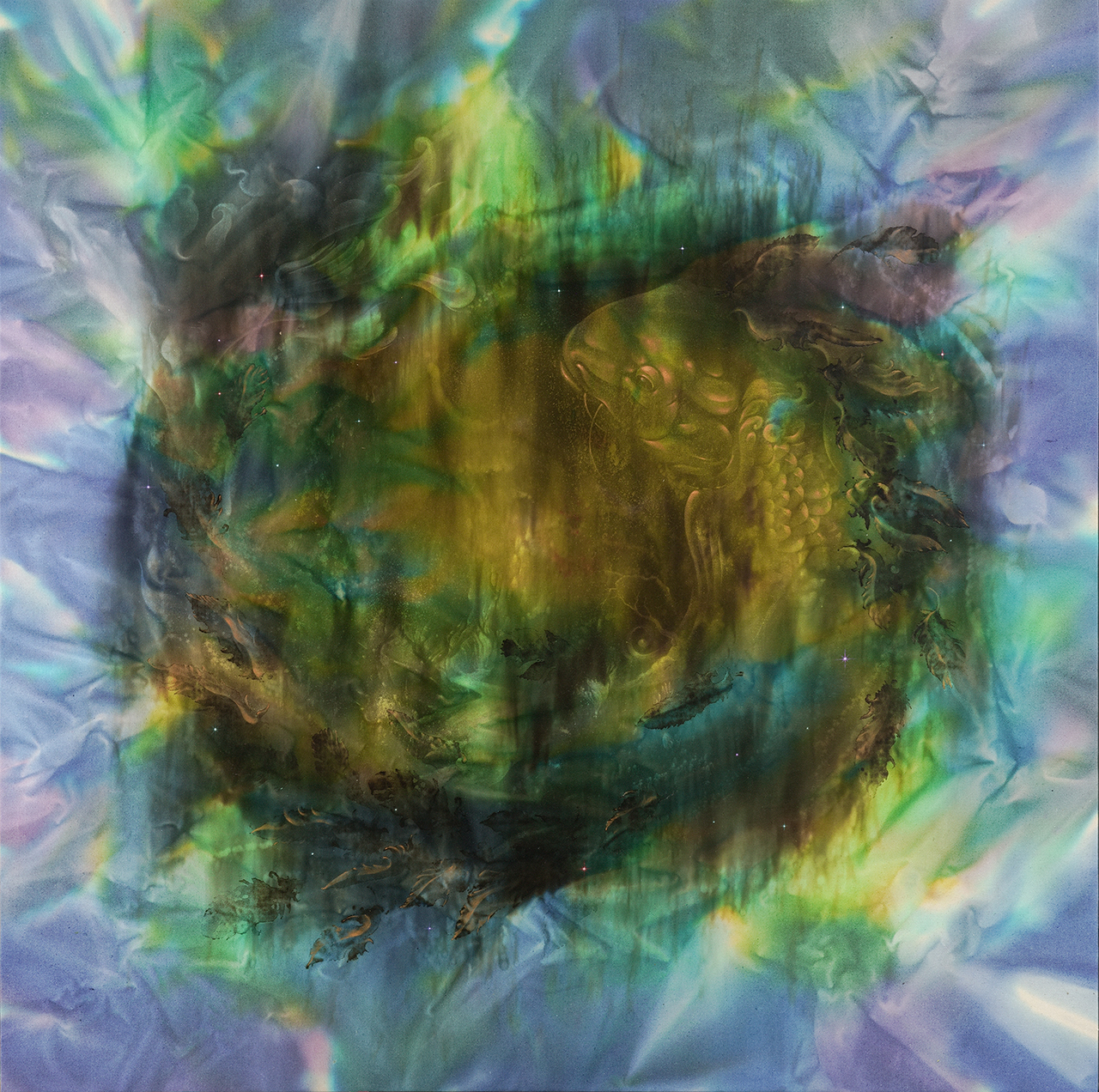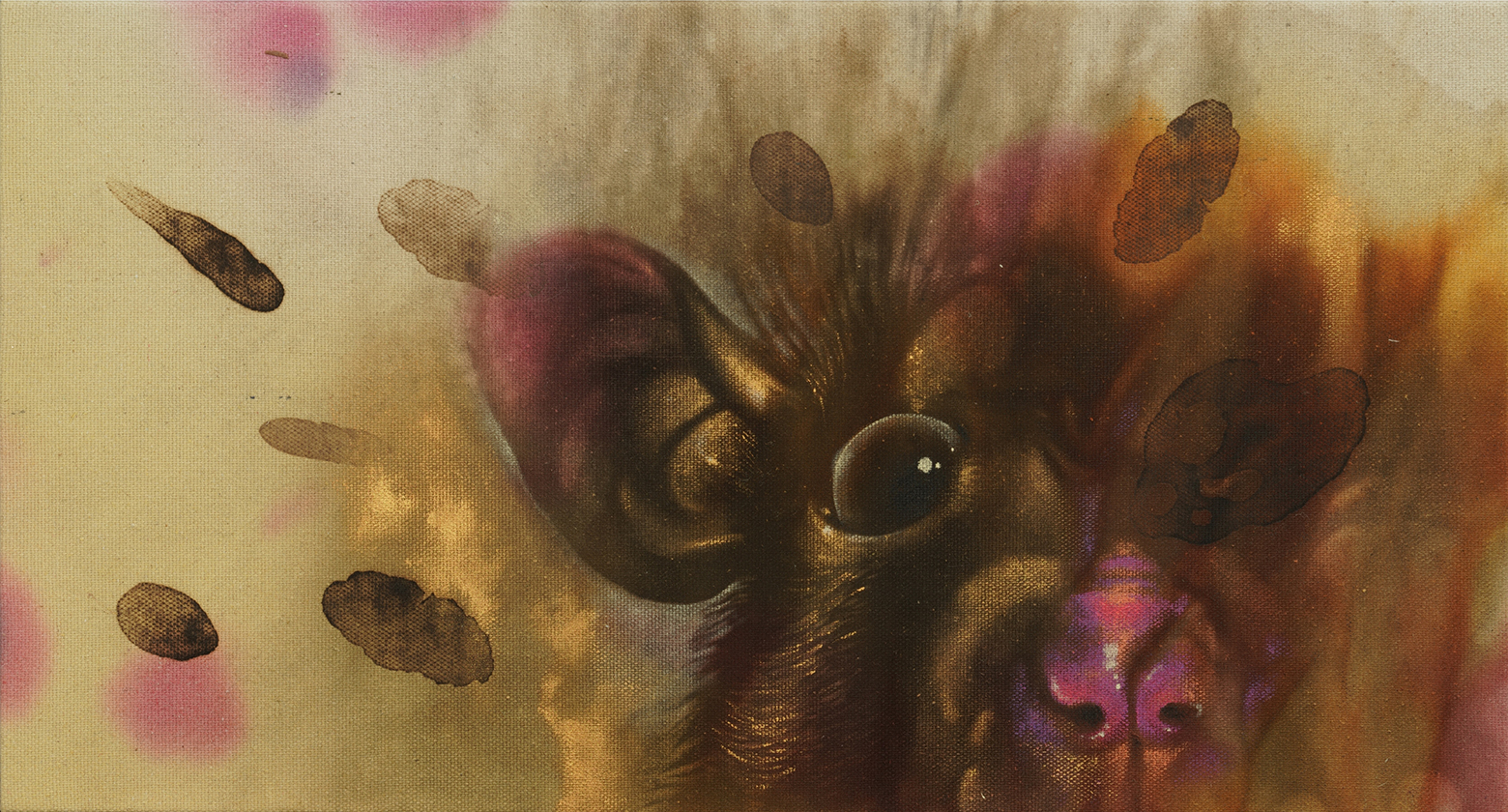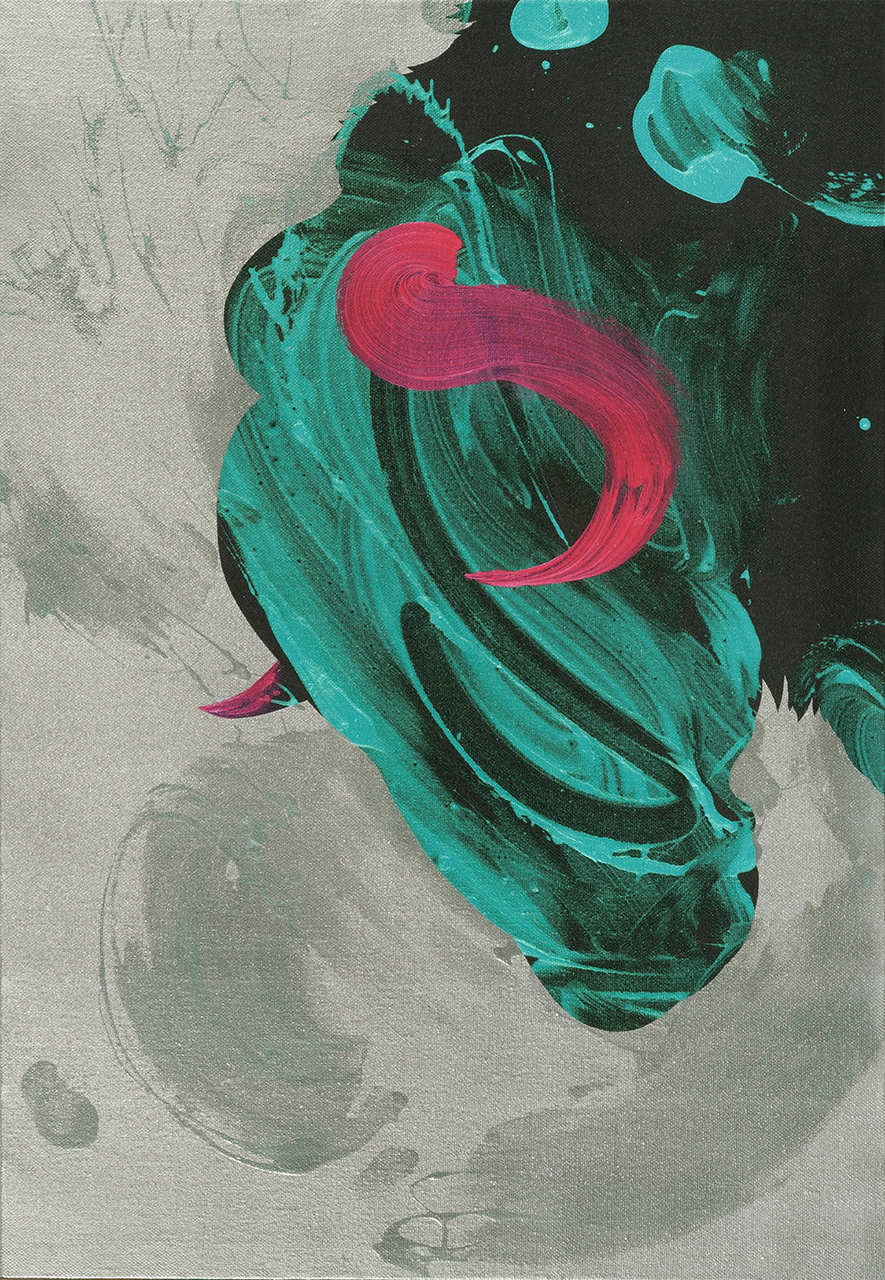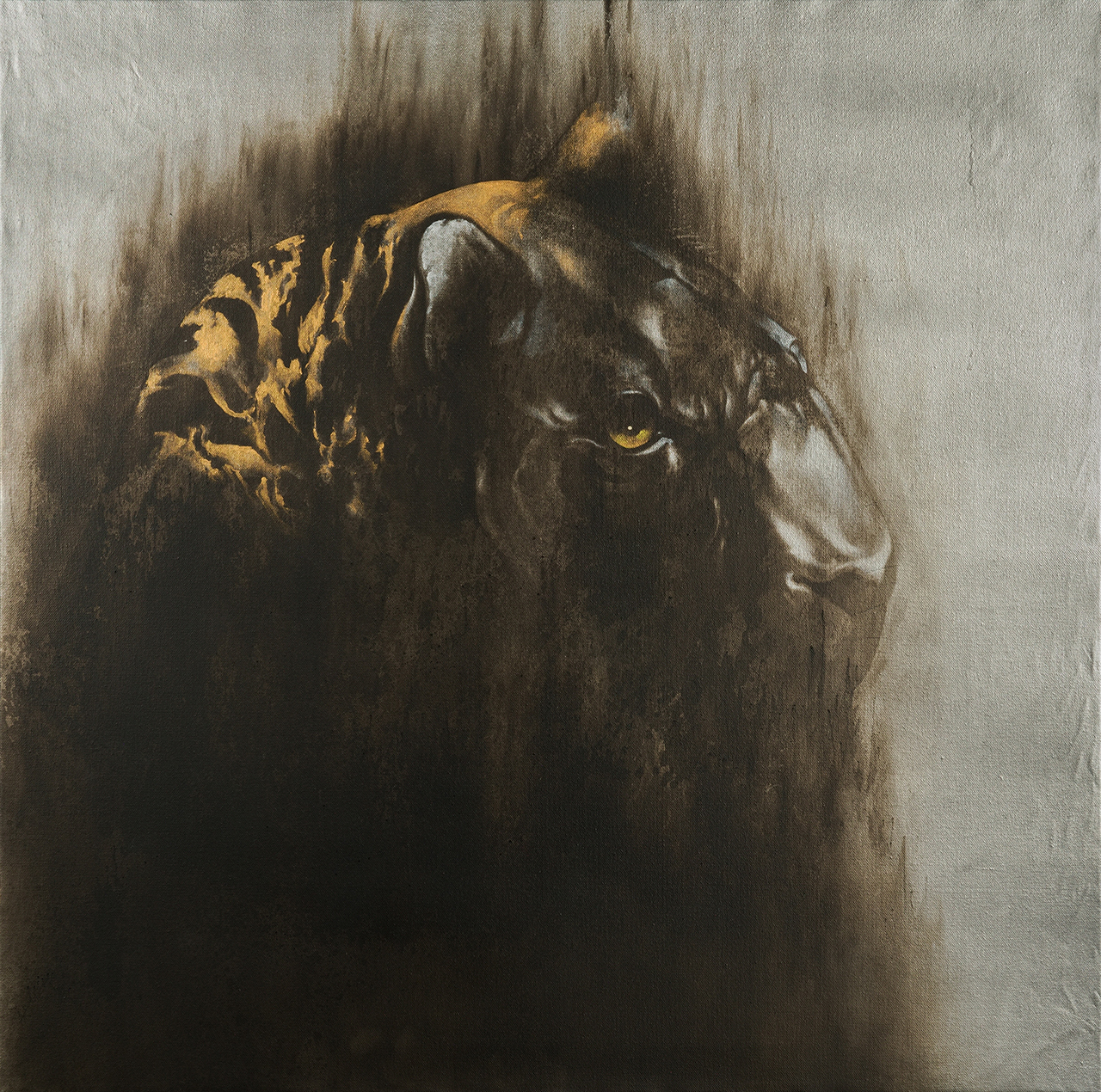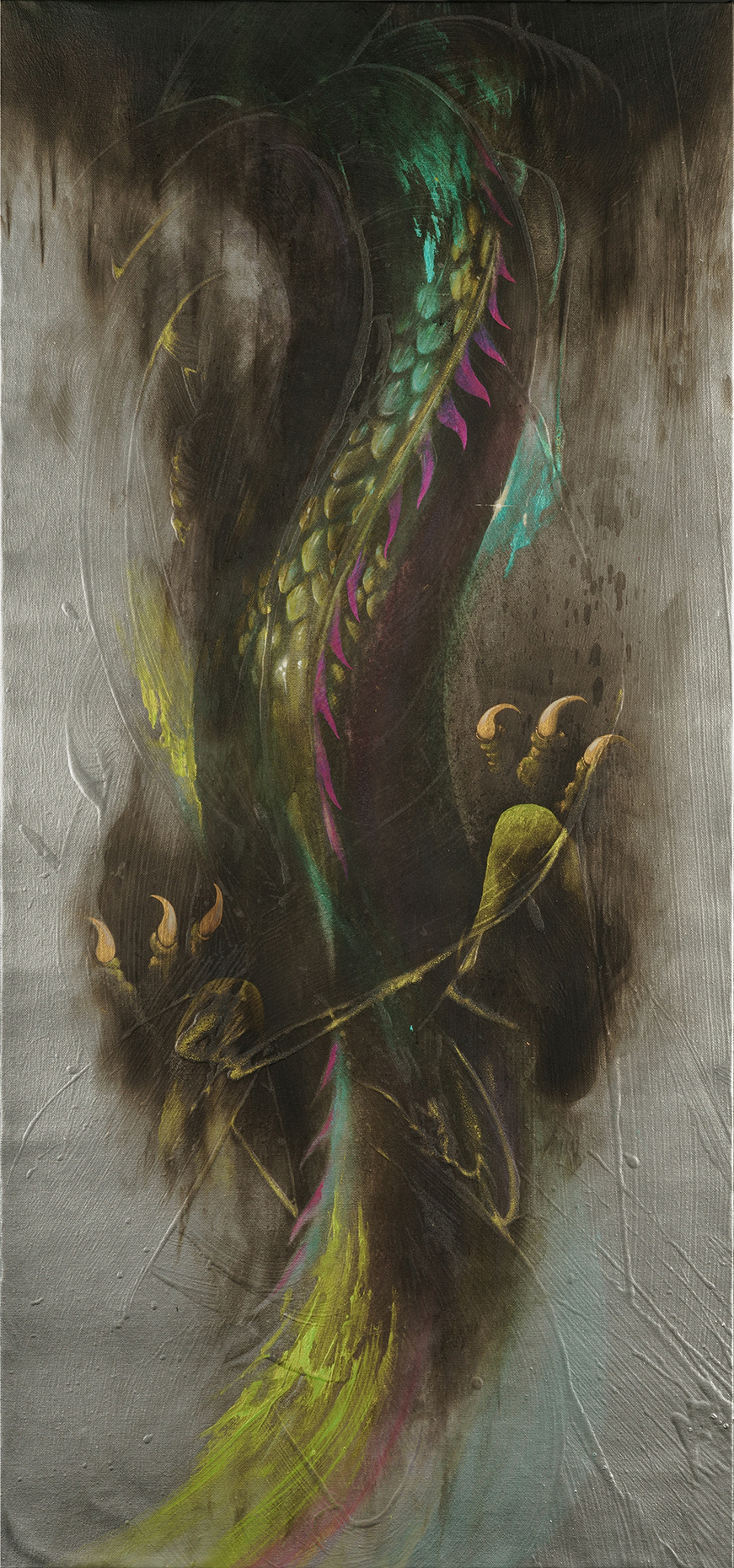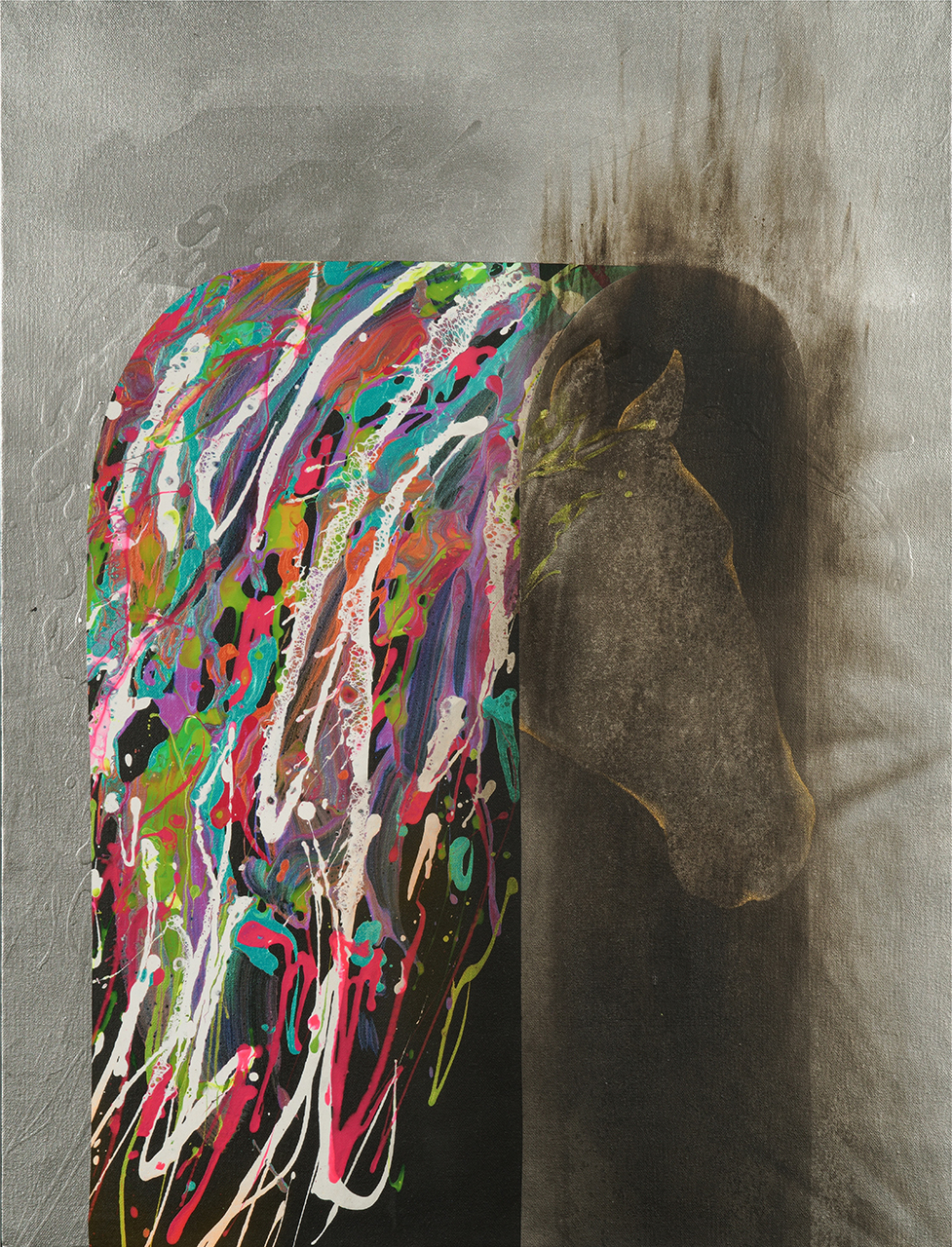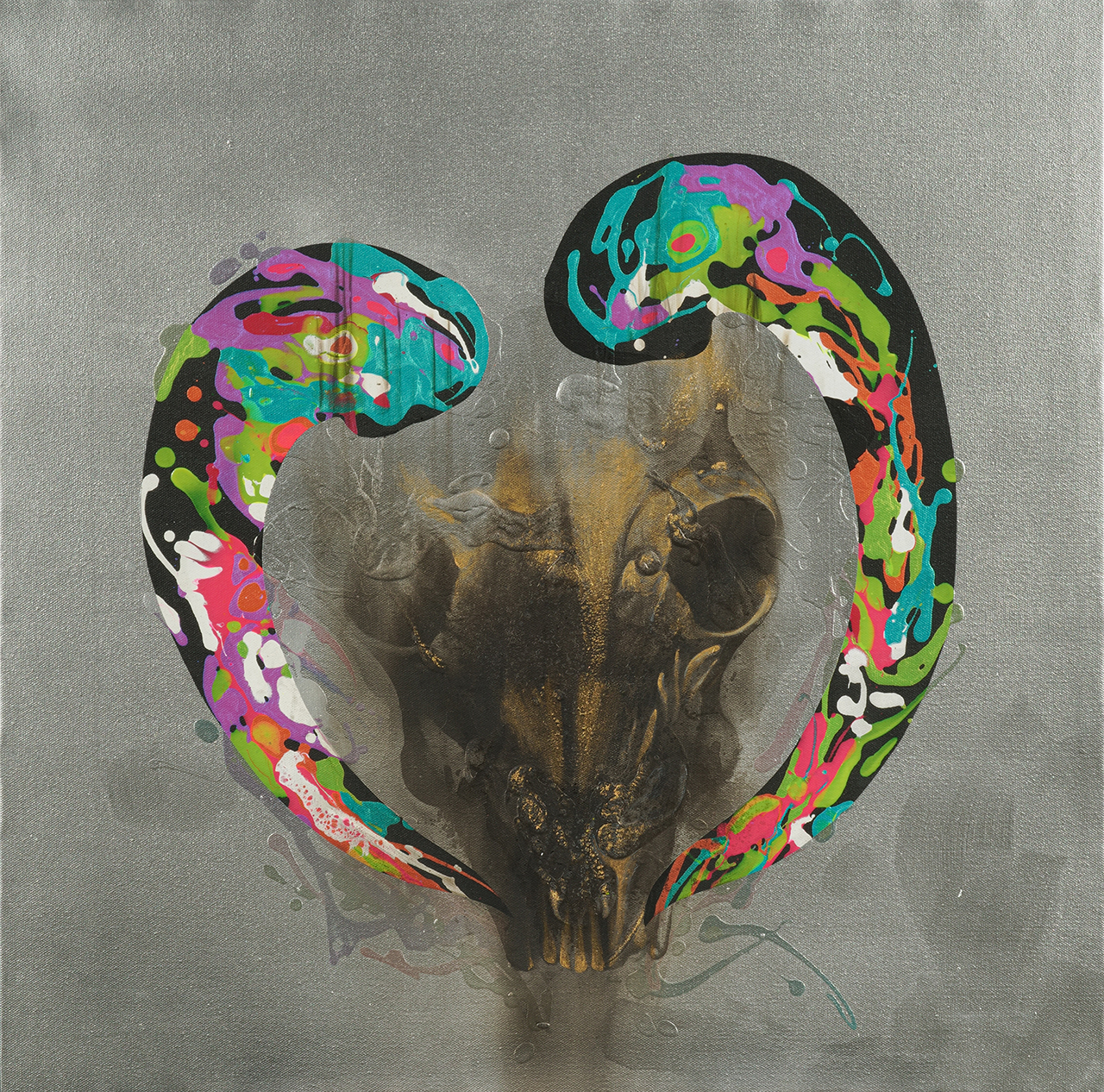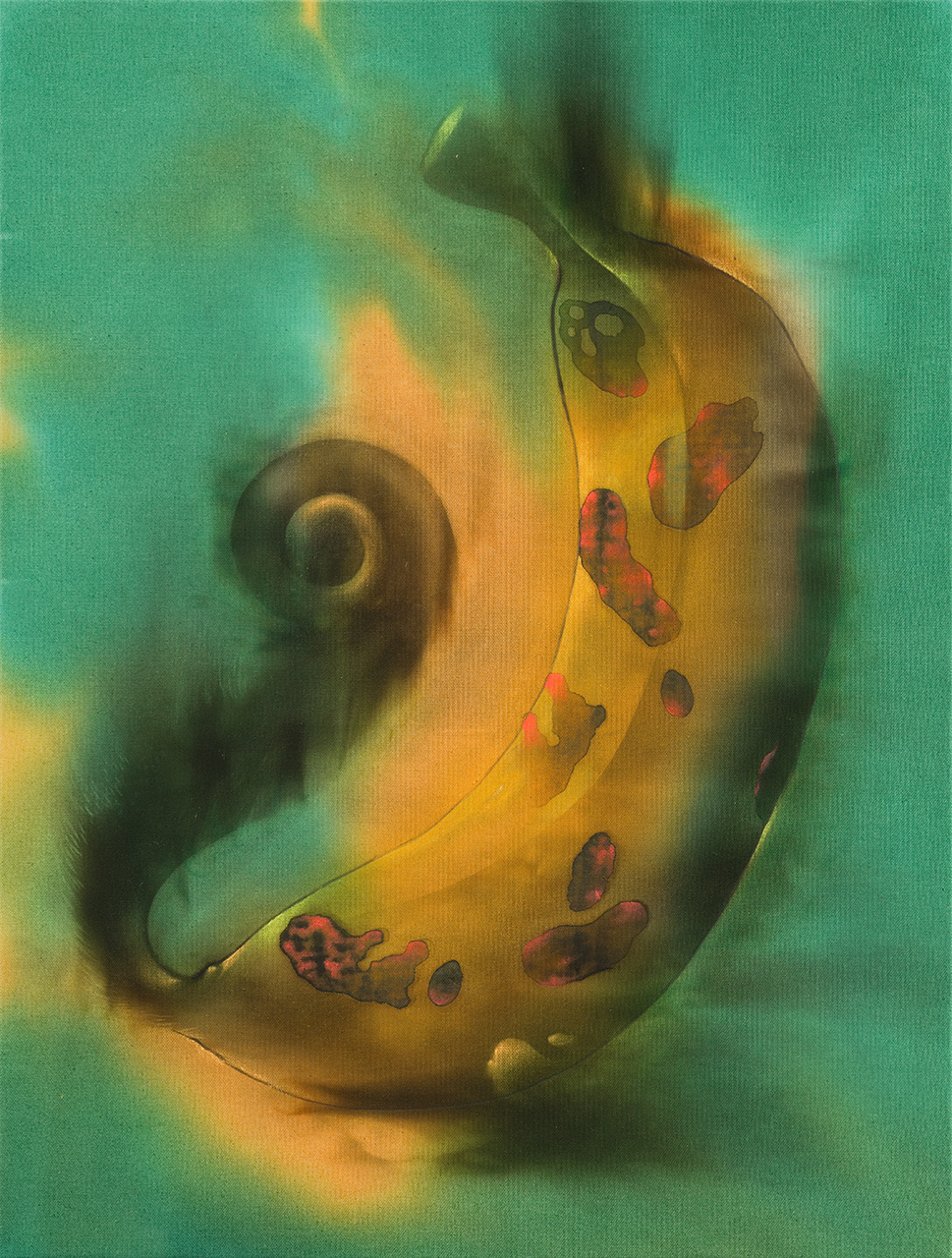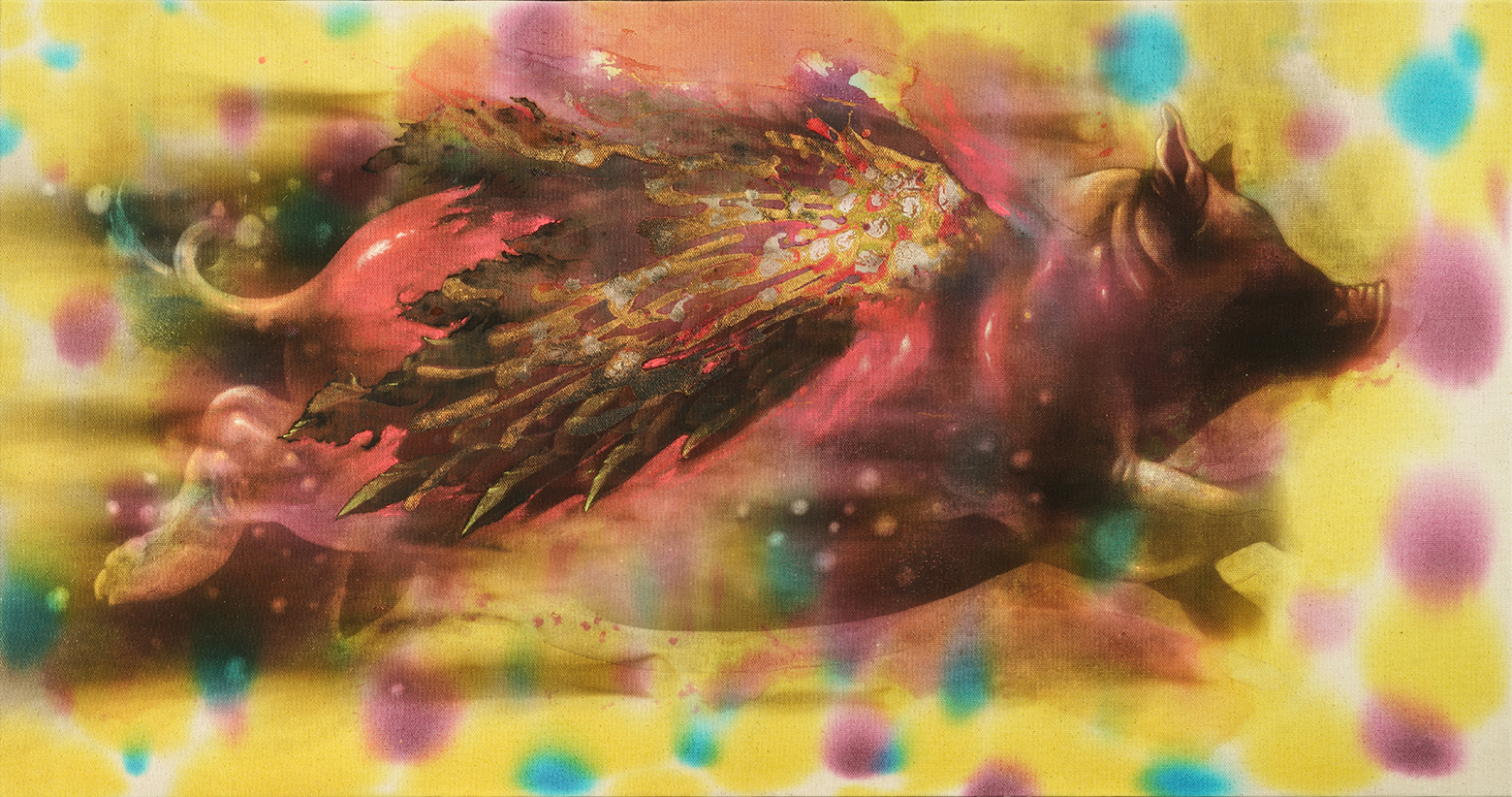Humanimal
Solo Exhibition:-
Haafiz Shahimi
In collaboration with 333 Gallery
5th Solo Exhibition
9th – 31st March 2024
333 Gallery, Warehouse 30, Bangkok, Thailand
E-Catalogue
*Click on images to zoom in
Haafiz Shahimi, born in Kedah, Malaysia, in 1986, graduated with a BA (Hons) in Fine Arts from UiTM Shah Alam in 2011. His artistic journey encompasses various disciplines, including painting, installation, and performing arts. Since 2014, he has delved into the techniques of creating artworks with fire, exploring pyrography printing and direct fire burning, thereby expanding the scope and scale of his artwork.
Haafiz has become synonymous with a unique style of pyrography printmaking, deeply rooted in Malaysia’s print and textile traditions. Initially inspired by batik printing, he mimicked cultural and mythological imagery onto metal blocks, creating personalized ‘matrices’ that, when heated, were applied to canvas and jute surfaces. While drawing clear parallels with batik production, he soon realized that temperature variations could alter the final visual effect, prompting him to experiment further.
Merging the laws of thermodynamics with the formal aspects of art production, including drawing, painting, and print, Haafiz unveiled a fascination with duality: science/mythology, East/West, physics/philosophy. Consequently, he developed a variety of printing techniques, including pyrography print, inverted burn, direct petrol burn, and chemical burning.
In 2022, Haafiz continued his exploration of materiality in his solo exhibition, “Covenant.” Shifting from using metal plates as printmaking matrices, he transformed them into an art form through plasma cut, automotive paint, and chemical rust on metal. This artistic evolution reflects his contemplative thoughts and perspectives on Abrahamic religion and beliefs.
Over the span of two years, Haafiz has embarked on a dynamic journey of technical innovation and artistic exploration, transitioning from his study of automotive paint on metal to an inventive exploration involving automotive paint on canvas, skillfully combined with his pyro techniques. Initially experimenting with the application of automotive paint on metal—a process akin to the meticulous painting of cars—Haafiz found the rigid surface more controllable in terms of color application. However, his latest venture involves applying automotive paint to the softer surfaces of jute or canvas, a mastery that took years to develop. Understanding the fluidity and materiality of automotive paint on soft surfaces presented a new set of challenges, underscoring Haafiz’s commitment to pushing artistic boundaries.
Motivated by a quest for bold and vibrant colors that could harmonize with his pyro techniques, Haafiz explored various substances. While acrylic and oil paints posed limitations, fabric dye emerged as a promising medium. Initial use mimicked traditional batik dyeing methods, yielding earthy tones. However, Haafiz’s current development in fabric dye has elevated the process. He now precisely controls color intensity and tonal values, demonstrating a level of mastery akin to that of a chemist carefully balancing powder dye proportions with solvent liquids for the desired effect after drying.
In the contemporary art scene, automotive paint has piqued the interest of many artists due to its intensity, vibrancy, and special reflective quality. Haafiz, however, envisioned the potential of this industrial medium to transcend its conventional use. Through the fusion of automotive paint with his pyro techniques—burning directly onto the paint surface—Haafiz has crafted a series of works that exemplify this innovative approach. “Iron Flower” in this new series serves as a clear example, where intense direct burning is applied to the hyper silver color of the automotive paint, resulting in accidental markings juxtaposed with deliberate construction and deconstruction of visuals.
Notably, in this latest series, Haafiz revisits a rare and painstaking process after a decade: pyrography with a rod to create lines reminiscent of charcoal drawings. The culmination of his 13- year artistic journey, the series titled “Humanimal,” comprises 17 works that showcase the evolution and fusion of his various techniques into a harmonious and captivating body of work.
Exhibition Overview: “Humanimal” by Haafiz Shahimi
In his latest exhibition, “Humanimal,” Haafiz Shahimi delves into a profound exploration of the interconnectedness between the Five Elements Theory and the animal horoscope within the rich cultural tapestry of Southeast Asia.
Five Elements Theory and Animal Horoscope: A Cultural Tapestry
The Five Elements Theory, comprising Wood, Fire, Earth, Metal, and Water, forms a foundational principle explaining the intricate relationships in the natural world—cycles of creation and destruction. Deeply ingrained in the cultural, religious, and social fabric of Southeast Asia, these elements foster a profound connection between its people and the surrounding natural world. Haafiz’s exploration extends to the integration of the animal horoscope in Chinese astrology, where each animal is associated with one of the five elements, influencing characteristics and destinies.
Artistic Response: “Humanimal” Series
In this exhibition, Haafiz presents two distinct sets of works. The first set, featuring five works, explores the profound relationships dictated by the five elements, emphasizing the cycles of creation and destruction in the natural world.
The second set, comprising twelve works, focuses on the individual characteristics of each animal in the Chinese zodiac, drawing parallels with human traits. These works serve as a captivating exploration of the shared essence between humans and the animals they are associated with, bridging the gap between the human and animal realms.
Exploring Elemental Relationships: Creation and Destruction
The first set, comprised of five works, delves into the profound relationships dictated by the Five Elements Theory—Wood, Fire, Earth, Metal, and Water—emphasizing the cyclical nature of creation and destruction in the natural world.
- Fireball (Fire):
In this focal piece, fire takes center stage, showcasing Haafiz’s signature use of this powerful element. “Fire Ball” explores the paradox of fire—its destructive force and its role in regeneration. Viewers are invited to contemplate the cyclical nature of destruction and renewal, finding beauty in the element that appears destructive at first glance.
- Iron Flower (Metal):
After the destruction of fire comes metal. “Iron Flower” discusses how life thrives after destruction and flowers despite fragility. The juxtaposition of a colorful pop flower against a backdrop resembling a crater and volcano prompts reflection on growth amidst devastation.
- Sleeping Beauty (Earth):
Reflecting the age of dinosaurs, “Sleeping Beauty” features an ambiguous visual of a tortoise hibernating within. Symbolizing Earth’s slow yet transformative movements, the tortoise becomes a metaphor for the creation of new continents and mountains.
- The Cradle of Life (Wood):
Inspired by the cradle of a baby, this piece symbolizes a new life cycle within the core of wood. Wood, integral in Southeast Asian culture, serves as shelter and nurturing space. The visual of a cocoon and butterfly signifies the beginning of a new life cycle.
- The Giver (Water):
Depicting the fluidity of water, “The Giver” associates fish with water—a lifeform dependent on water’s sustenance. The artwork reflects water as a magnet of life, fostering nature’s thriving within its stream.
Exploring Animal Horoscope: A Quirky Interpretation
Haafiz’s exploration of the animal horoscope delves into the intriguing parallels between human characteristics and animal traits, infused with a twist of quirkiness drawn from his everyday observations and experiences.
- It’s a Trap (Rat):
Exploring perceptions of fear and disgust associated with rats, Haafiz captures the moment of a rat peeking from a cheese corner, utilizing pyrography print and burnt lines to evoke a sense of unease and curiosity.
- Holy Cow! (Cow):
A laborious endeavor, this piece demanded meticulous strokes to portray the object accurately. With only two mediums—automotive paint and acrylic—Haafiz meticulously crafted the cow’s image, undergoing three revisions to achieve perfection. The title “Holy Cow!” reflects the challenging nature of the work.
- Lurking (Tiger):
Capturing the predatory and mysterious essence of the tiger, Haafiz creates a nocturnal scene with black hues, accentuating the tiger’s stripes and evoking a sense of anticipation as it lurks in the darkness.
- Push-Up (Rabbit):
A cheeky visual inspired by a bra hanging, reminiscent of a perked-up rabbit’s ears, Haafiz creates a playful outline using colorful polka dots, blurring the lines between lingerie and animal imagery.
- Drag-On (Dragon):
Drawing inspiration from the ancient mythical creature, Haafiz employs a vibrant rainbow palette to depict dragons soaring high in the sky, symbolizing freedom and power.
- Handsnake (Snake):
Reflecting familial connections and playful interactions, this piece portrays a puppet hand snake— a game Haafiz often plays with his children—a testament to the bond shared within the family unit.
- Horsewalk (Horse):
Juxtaposing wild, colorful strands against a static horse head, Haafiz prompts contemplation on the confinement of nature and the limitations imposed on animals, inviting viewers to question human intervention in the natural world.
- Greatest of All Time (Goat):
This textured work, created through burning and melting acrylic, showcases ram horn-shaped motifs bursting with color, symbolizing a legend enduring even after death
- Split (Monkey):
Playful and whimsical, this piece cleverly disguises a banana as a monkey tail, adorned with pink patches reminiscent of monkey fur, adding depth and symbolism to the composition
- Funky Chic (Rooster):
In a playful twist on the age-old question of the chicken or the egg, Haafiz presents both—a chic breaking out of its egg—a whimsical representation of the cycle of life and the mysteries of creation.
- L(h)olypup (Dog):
Inspired by his daughter’s lollipop licking, reminiscent of a puppy’s affectionate gestures, Haafiz crafts a delightful image of a puppy with a lollipop halo, symbolizing the adoration and care bestowed upon pets by their owners.
- Flying Pig (Pig):
Traditionally perceived as sluggish, Haafiz transforms the pig into a graceful creature akin to a unicorn, adorned with vibrant pink hues that exude elegance and contemporary charm
Conclusion:
“Humanimal” encapsulates Haafiz Shahimi’s artistic journey, merging philosophical concepts with practical applications. The exhibition invites viewers to reconsider their perceptions, offering a nuanced perspective on the deep-rooted beliefs shaping the Southeast Asian worldview. Through this body of work, Haafiz seamlessly intertwines elements and animal symbolism, prompting contemplation on the shared essence of humanity and the natural world.
